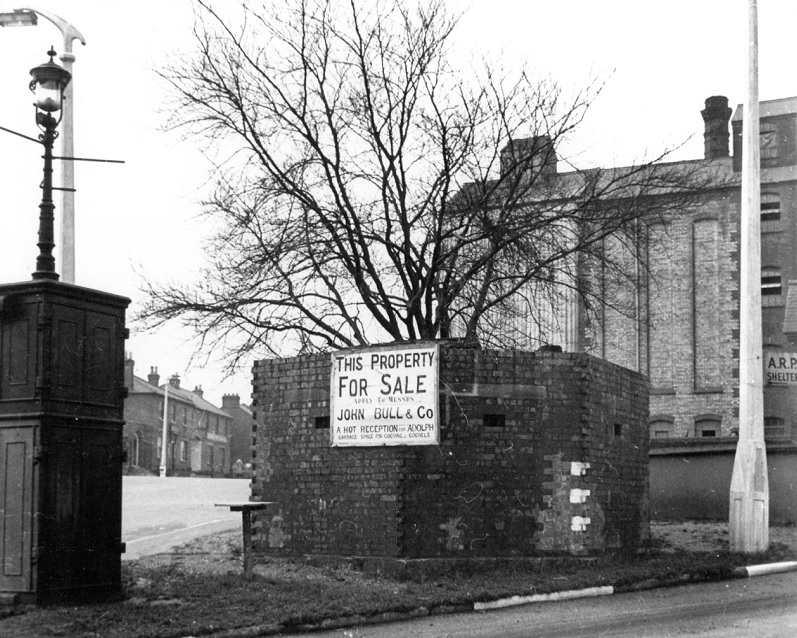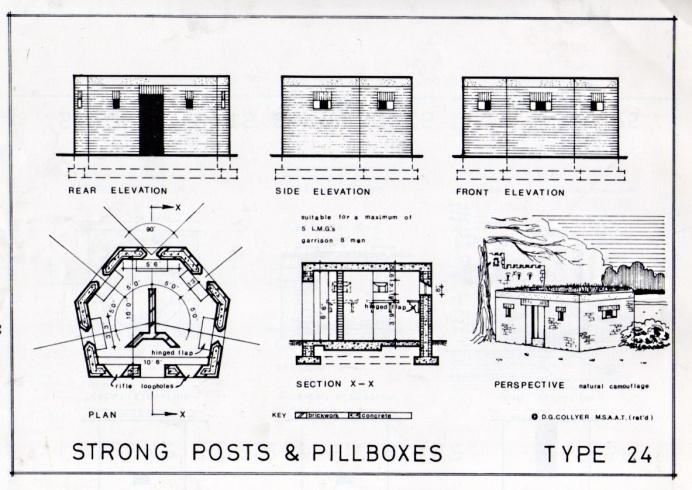All images courtesy Simon Maddison
Hitchin retains very little physical evidence of its Second World War (WW2) history. There are, however, two surviving structures which have been identified, and are undergoing preservation after many years of deterioration.
Several other Hitchin structures, including other pillboxes, mortar/gun placements and public air raid shelters, have long since been removed and/or replaced by new developments.
Across the country, 28,000 pillboxes were constructed of which approximately 6,000 remain today.
What is a pillbox?
A pillbox, sometimes called a ‘redoubt’ is a small brick and/or concrete building of approximately 3m height, usually of standard design. They are named pillboxes as their shape resembles small boxes issued by doctors which contained pills for medical treatment. These compact buildings were designed to house a small number of armed soldiers who would be able to help defend against land invasion.
Why were pillboxes built?
In mid 1940, about eight months after the start of WW2, following the fall of France to the German army, and the evacuation of the British Expeditionary Force from Dunkirk, the German invasion of UK by Nazi leader Adolf Hitler, seemed to be imminent.
Germany gave their invasion plan for the UK the codename ‘Operation Sea Lion’.
In response to this threat, and together with many other defensive measures, the UK Government, led by Winston Churchill, ordered structures to be built across the country at specific locations. These were intended to defend cities, towns, villages and strategic installations against land invasion by German troops, and typically located along town arterial routes such as main roads and railway stations.
Since an imminent invasion appeared likely, pillboxes of various designs were quickly drawn up by the War Office’s Directorate of Fortifications and Works (“FW3”) and made available to local community leaders. The designs were simple, requiring no special materials or skills, to enable pillboxes to be quickly constructed. Seven initial designs were developed (Type 22 – 28) although designs were sometimes locally modified to suit specific local conditions. Most were above ground but some were partially embedded into the ground.
In the event, the pillboxes were never used against invasion. The German land invasion of the UK needed prior air superiority for its support. The Battle of Britain ended in September 1940 in victory for the RAF led by Air Chief Marshall Hugh Dowding, and defeat for the German air force (Luftwaffe) led by Commander in Chief Hermann Goering. With air superiority not having been achieved, Operation Sea Lion was aborted by Adolf Hitler.
Who would defend the towns from invasion?
On 14 May 1940, the British Minister for War, Anthony Eden (later to become Prime Minister) called for civilian men aged between 17 and 65 to enrol in a new force, know as Local Defence Volunteers (LDV). By July, 1.5 million volunteers had come forward and its name was changed to the Home Guard. The average age of the Home Guard volunteers was 30, giving a lie to the impression given in the BBC comedy programme Dad’s Army that most were old men!
The volunteers were not professional military men, but were provided with uniforms, weapons and other equipment, and were trained in their use. They carried out many duties including the manning of pillboxes in order to defend against land invasion.
In Hitchin, the 2nd Battalion Hertfordshire Home Guard was formed in May 1940 and attached to the Bedfordshire and Hertfordshire Regiment of the British Army. In the photo below, the Hitchin Home Guard are shown on parade in the town centre:
Where are the Hitchin Pillboxes?
The two pillboxes remaining in Hitchin are both Type 24 design and are located:
- In Grove Road, adjacent to Redoubt Close (Identification number S0013414). The Pillbox is visible from the path, behind railway steel fencing.
- Arlesey Road (Identification number S0013413) on the Hitchin side of Bowman Ingredients’ company buildings. The pillbox is located in a field close to the road, visible behind the small trees that line the road.
IMPORTANT: Please note these structures are on private land, and no attempt should be made to access them.
… and a Hitchin Pillbox that is no more. This one was near the station, at the junction of Walsworth and Nightingale Roads:

Bowman’s mill looms on the right – note sign for ARP shelter
What do the pillboxes look like?
The diagram below shows a type 24 pillbox which was the standard design used for our two pillboxes.
In particular, it shows:
- the access door, about 4 feet height, with steel access gate.
- openings through which rifles can be fired (known as loopholes) and their internal gun supports.
- the internal three-sided support tower that added strength and would also limit internal fatalities and casualties in the event of a grenade detonating inside the pillbox.

What is being done to preserve the two Hitchin pillboxes?
Both pillboxes have not received any preservation for many years and are in a poor state of repair. A small group of interested Hitchin volunteers have, together with HHS, carried out initial inspection and removal of overgrowing vegetation.

For Arlesey Road however, the land owner will not allow similar preservation, hence the building remains exposed to deterioration.
Where can I find out more about pillboxes?
There are numerous websites to browse, but the accuracy of these external sites cannot be guaranteed.
Some useful sources of general information can be found at:
http://www.pillbox-study-group.org.uk/
https://archaeologydataservice.ac.uk/archives/view/dob/index.cfm
and a video about pillboxes at https://www.youtube.com/watch?v=uWzmeShhfpI
If you feel interested enough to consider being part of a team working to preserve Hitchin’s pillboxes, please email and your details will be forwarded to the existing group of volunteers.
















